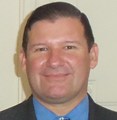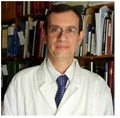- Submissions

Full Text
Novel Research in Sciences
Why Not we Change our D.N.A. to Control Metabolic Disorders Naturally?
Pramod Stephen*
Innovator, Christian Church PO Sugauli, India
*Corresponding author:Pramod Stephen, Innovator, Christian Church PO Sugauli 845456, East Champaran, Bihar, India
Submission: November 07, 2024;Published: November 27, 2024
.jpg)
Volume16 Issue 3November 27, 2024
What is Chromosomes?
Chromosomes are threadlike structures made of protein and a single molecule of DNA that serve to carry the genomic information from cell to cell. In plants and animals (including humans). Chromosomes reside in the nucleus of cells. Humans have 22 pairs of numbered chromosomes (autosomes) and one pair of sex chromosomes (XX or XY), for a total of 46. Each pair contains two chromosomes, one coming from each parent. Which means that children inherit half of their chromosome from their mother and half from their father. Chromosomes can be seen through a microscope when the nucleus dissolves during cell division. Chromosomes are found in the nucleus of every cell of our body and are made up of DNA, tightly coiled around proteins. We have 23 pairs of chromosomes altogether, and they can only be easily observed during cell division.
So why our DNA is kept in this special packaging? The chromosomes unique structure allows our genetic data to be discreetly kept inside our nuclei. This is important because we have an abundance of genetic data .If the DNA molecules in a single cell were unwound, they would stretch out of six feet long.
The chromosomes unique structure has a few key parts. Each chromosomes has two short arms called p arms and two arms called q arms. These arms are held together at the centre by the centromere. The tips of the chromosomes are capped by sections of DNA called telomeres. Telomeres protect chromosomes during DNA replication. By keeping our DNA secure, chromosomes make daily activities possible. For an organism to function properly, certain cells must constantly divide and replace older worn outs cell with new ones. Chromosomes allow DNA to be accurately copied during these cell divisions.
So, one more time. Chromosomes are found in the nuclei of our cells and allow DNA to be accurately copied during cell division. This ensures that our inner working proceed smoothly and efficiently.
How chromosomes works?
Our body is made up of trillions of cells. Each cell is a copy of a single cell that divided itself to make all of the cells in your body. Your cells needs instructions to create who you are. Your DNA, genes and chromosomes work together to tell your body how to form and function.
How do I improve the health of my DNA?
To improve the health of your DNA, take steps to take care of your body since your DNA is
responsible for how you form and function. You can improve your overall health by.
a. Eating a well-balanced diet.
b. Exercising.
c. Maintaining a healthy weight
What is DNA?
DNA is a biological molecule that contains the instructions an
organism needs to function, develop, and reproduce. It is present in
all forms of life on the earth and contains each organism’s genetics
code.
https://www.ncbi.nlm.nih.gov/books/NBK26821/
How does DNA change?
Mutations result either from errors in DNA replication or from
the damaging effects of mutagens, such as chemicals and radiation,
which react with DNA and change the structures of individual
nucleotides. All cells possess DNA-repair enzymes that attempt to
minimize the number of mutations that occur.
https://www.nih.gov/news-events/nih-research-matters/
dna-changes-predict-longevity
What is mutation and how does it work?
A mutation is a change in the DNA sequence of an organism. Mutations can result from errors in DNA replication during cell division, exposure to mutagens or a viral infection. Germline mutations (that occur in eggs and sperm) can be passed on to offspring, while somatic mutations (that occurs in body cells) are not passed on.
Mutations are happening in our cells all the time, but almost
none of these affect our health. This is very different than what
we often see in science fiction in movies. In real life, a mutation is
never so beneficial that it turns a person into a superhero or does
something bizarre like cause them to grow wings. There are many
reasons that mutations usually don’t have major consequences.
One reason is that our cells have very sophisticated machinery for
repairing mutations very quickly. So there’s not enough time for
them to cause problems. Another is that most mutations occur in
somatic cells like muscle cells or skin cells and can only affect the
cell where the mutation occurred and cells that grow from that cell.
On the other hand, when mutations occur in germline cells, eggs
and sperm, they will be present in every cell that develops from that
egg or sperm, an entire person, and can have larger effects.
h t t p s : / / w w w. n c b i . n l m . n i h . g o v / b o o k s /
NBK21114/#:~:text=A%20mutation%20
What is RNA?
Ribonucleic acid (abbreviated RNA) is a nucleic acid present in
all living cells that has structural similarities to DNA. Unlike DNA,
however, RNA is most often single-stranded. An RNA molecule has
a backbone made of alternating phosphate groups and the sugar
ribose, rather than the deoxyribose found in DNA. Attached to each
sugar is one of four bases: Adenine (A), Uracil (U), Cytosine (C) or
Guanine (G). Different types of RNA exist in cells: messenger RNA
(mRNA), ribosomal RNA
https://www.genome.gov/genetics-glossary/RNARibonucleic-
Acid
How RNA Work?
RNA is synthesized from DNA by an enzyme known as RNA polymerase during a process called transcription. The new RNA sequences are complementary to their DNA template, rather than being identical copies of the template. RNA is then translated into proteins by structures called ribosomes. There are three types of RNA involved in the translation process: messenger RNA transfer RNA and ribosomal RNA.
The cell. For example, some RNA molecules are involved in
switching genes on and off, and although some RNA molecules
are passive copies of DNA, many play crucial, active roles in other
RNA molecules make up the critical protein synthesis machinery in
ribosomes.
https://www.ncbi.nlm.nih.gov/books/NBK558999/
What is genome?
Encoded as the DNA within each of the 24 distinct chromosomes
in the cell nucleus. A small DNA molecule is found within individual
mitochondria. These are usually The human genome is a complete
set of nucleic acid sequences for humans, treated separately as the
nuclear genome and the mitochondrial genome.
https://www.genome.gov/genetics-glossary/Genome
How does human genome work?
Human genomes include both protein-coding DNA sequences and various types of DNA that does not encode proteins. The latter is a diverse category that includes DNA coding for non-translated RNA, such as that for ribosomal RNA, transfer RNA, ribozymes, small nuclear RNAs, and several types of regulatory RNAs.
Genetics and our Health
The strongest risk factors for common disease complexes such as cancer, cardiovascular disease, diabetes, autoimmune disorders, and psychiatric illnesses. A person inherits a complete set of genes from each parent, as well as a vast array of cultural and although there are many possible causes of human disease, family history is often one of socioeconomic experiences from his/her family. Family history is thought to be a good predictor of an individual’s disease risk because family members most closely represent the unique genomic and environmental interactions that an individual experiences. Inherited genetic variation within families clearly contributes both directly and indirectly to the pathogenesis of disease. This chapter focuses on what is known or theorized about the direct link between genes and health and what still must be explored in order to understand the environmental interactions and relative roles among genes that contribute to health and illness.
Genetic Code
The genetic code is a set of rules defining how the four-letter code of DNA is translated into the 20-letter code of amino acids, which are the building blocks of proteins. The genetic code is a set of three-letter combinations of nucleotides called codons, each of which corresponds to a specific amino acid or stop signal.
There are 64 possible permutations, or combinations, of three-letter nucleotide sequences that can be made from the four nucleotides. Of these 64 codons, 61 represent amino acids, and three are stop signals. Although each codon is specific for only one amino acid (or one stop signal), the genetic code is described as degenerate, or redundant, because a single amino acid may be coded for by more than one codon. It is also important to note that the genetic code does not overlap, meaning that each nucleotide is part of only one codon-a single nucleotide cannot be part of two adjacent codons. Furthermore, the genetic code is nearly universal, with only rare variations reported. For instance, mitochondria have an alternative genetic code with slight variations.
How genetics code change?
The genetic code grew from a simpler earlier code through a process of “biosynthetic expansion”. Primordial life “discovered” new amino acids (for example, as by-products of metabolism) and later incorporated some of these into the machinery of genetic coding.
What are genetic disorders?
Genetic abnormalities are conditions caused by changes to the genes or chromosomes. Inherited disorders are caused by gene mutations. Chromosomal abnormalities occur when there are missing or extra chromosomes or pieces of chromosomes. Down syndrome is an example of a genetic disorder caused by a chromosome abnormality.
How do genetic disorders occur?
Genetic abnormalities occur when there is an abnormality in one or more genes. Some genetic disorders are passed down from parents to children through their genes. Sometimes there are sporadic changes in the DNA of a gene that cause the developing baby to be affected without a prior family history
Can genetic abnormalities be prevented?
Genetic defects cannot always be prevented, but there are many aspects of prenatal care that can protect your unborn baby.
What happens if genetic abnormalities are detected?
Surprisingly, recent and ongoing research suggests that positive behavioural and lifestyle changes can affect you genetically. This might sound crazy considering we are all born with a fixed genome, but our genes can be altered depending on their activity level.
How DNA Change Place?
DNA is constantly changing through the process of mutation. DNA is a dynamic and adaptable molecule. As such the nucleotide sequences found within is are subject to change as the result of a phenomenon called Mutation. Depending on how a particular mutation modifies an organism’s genetic makeup, it can prove harmless, helpful, or even hurtful. Sometimes, a mutation may even cause dramatic changes in the physiology of an affected organism. Of course, in order to better understand the varying effects of mutations, it is first necessary to understand what mutations are and how they occur.
How genes effect our life?
Genes are a set of instruction passed down from parent of offspring. They contain the information that determine a person’s specific physical and biological traits like, hear colour, eye colour, and blood type. Most genes code for specific proteins which have different functions throughout the body and allow humans to live, grow, and reproduce.
Genes are made of sections of DNA. DNA is made of chemical building blocks called nucleotides. A gene consists of four different nucleotide bases, which can be sequenced in different ways. Different sequences of bases determine different instructions, which account for various physical traits, like having blue eyes or brown eyes.
Changes in genes can lead to incorrectly formed proteins that can’t function correctly. These are called gene mutations and may lead to genetic disorders.
Researchers are studying genetic testing to be able to identify
changes in a person’s DNA that may show if they are at risk for
developing a disease or passing down a disease to their offspring.
h t t p s : / / w w w . m e d i c a l n e w s t o d a y . c o m /
articles/120574#summary
Your genes affect many things about you, including how you look (for example, your eye colour or height) and how your body works (for example, your blood type). In some cases, your genes are linked to diseases that run in your family. In other cases, your genes influence how your body reacts to health conditions, such as infections; to medicines or other treatments for health conditions; or to certain behaviours, such as smoking or alcohol use.
Better understanding of how genes affect health can improve health in many ways. Knowing if someone has a genetic difference that makes them more likely to get a disease can help them take steps to prevent the disease or find it earlier, when it is easier to treat. If someone already has symptoms of a disease or condition, finding out the genetic difference that causes that disease or condition can help the healthcare provider understand what health outcomes the person might have in the future. Improved understanding of how genes are linked to disease can lead to better treatments for those diseases.
This page provides information about basic genetic concepts such as DNA, genes, chromosomes, and gene expression. Terms to know
DNA
DNA (which is short for deoxyribonucleic acid) contains the instructions for making your body work. DNA is made up of two strands that wind around each other and looks like a twisting ladder (a shape called a double helix). Each DNA strand includes chemicals called nitrogen bases, which make up the DNA code. There are four different bases, T (Thymine), a (Adenine), C (Cytosine), and G (Guanine). Each base on one strand of DNA is paired with a base on the other strand. The paired bases form the “rungs of the DNA ladder”.
The bases are in different orders on different parts of the DNA strand. DNA is “read” by the order of the bases that is by the order of the Ts, cs, gs, and as. The order of these bases is what is known as the DNA sequence. The DNA in almost all living things is made up of the same parts. What’s different is the DNA sequence.
Inheritance
Genetic inheritance is the process of passing down DNA from parents to children.
Genome
Your genome is all of the DNA in your body.
Chromosomes
DNA is packaged into small units called chromosomes. A chromosome contains a single, long piece of DNA with many different genes. You inherit your chromosomes from your parents. Chromosomes come in pairs. Humans have 46 chromosomes, in 23 pairs. Children randomly get one of each pair of chromosomes from their mother and one of each pair from their father. There are 22 pairs of numbered chromosomes, called autosomes, and the chromosomes that form the 23rd pair are called the sex chromosomes. They determine if a person is born a male or female. A female has two X chromosomes, and a male has one X and one Y chromosome. Each daughter gets an X from her mother and an X from her father. Each son gets an X from his mother and a Y from his father.
Genes and proteins
Each chromosome has many genes. Genes are specific sections of DNA that have instructions for making proteins. Proteins make up most of the parts of your body and make your body work the right way. You have two copies of every gene. You inherit one copy from your father and one copy from your mother. The genes people inherit from their parents can determine many things. For example, genes affect what a person will look like and whether the person might have certain diseases.
Alleles
Alleles are forms of the same gene that may have small differences in their sequence of DNA bases. These differences contribute to each person’s unique features. Each person has two alleles for each gene, one from each parent. If the alleles of a gene are the same, the person is considered homozygous for the gene. If the alleles are different, the person is considered heterozygous for the gene.
Most of the time, differences between alleles do not have much of an effect on the protein that is made. However, sometimes different alleles can result in differences in traits, such as blood type. Some alleles are associated with health problems or genetic disorders. In these alleles, the differences in the sequence of DNA bases affects the body’s ability to make a certain protein.
Because your genes were passed down from your parents, you and your family members share many gene alleles. The more closely related you are, the more gene alleles you have in common.
Cells
Cells are the basic units of life. The human body contains trillions of cells. There are many different types of cells that make up the many different tissues and organs in the body. For example, skin cells, blood cells, heart cells, brain cells, and kidney cells are just a few of the cell types that perform different vital functions in the body.
The basic structure of a cell is a jelly-like substance known as cytoplasm, which is surrounded by a membrane to hold it together. Within the cytoplasm are various specialized structures that are important to the work of the cell. One of these structures is the cell nucleus, which contains the DNA packaged in chromosomes.
Gene expression
Gene expression refers to the process of making proteins using the instructions from genes. A person’s DNA includes many genes that have instructions for making proteins. Additionally, certain sections of DNA are not part of a gene but are important in making sure the genes are working properly. These DNA sections provide directions about where in the body each protein should be made, when it should be made, and how much should be made.
For the most part, every cell in a person’s body contains exactly the same DNA and genes, but inside individual cells some genes are active (“turned on”) while others are not. Differences in how genes are used (expressed) to make proteins are why the different parts of your body look and work differently. For example, gene expression in the muscles is different from gene expression in the nerves.
Gene expression can change as you age. Also, your behaviours, such as smoking or exercise, or exposures in your environment can affect gene expression.
DNA methylation
DNA methylation works by adding a chemical (known as a methyl group) to DNA. This chemical can also be removed from the DNA through a process called demethylation. Typically, methylation turns genes “off” and demethylation turns genes “on.”
DNA methylation is one of the ways the body controls gene expression. Methylation and demethylation do not change the DNA code (the sequence of the DNA bases), but they help determine how much protein is made.
Genetic change (mutation, gene variant, genetic variant)
A genetic change (sometimes called a mutation, gene variant, or genetic variant) is a change in a DNA base sequence. While not all genetic changes will cause problems, sometimes, changes in genes can lead to changes in proteins and then the proteins don’t work the way they are supposed to. This can lead to disease.
Some genetic changes can be passed on from parent to child (inherited). These genetic changes occur in the germ cells, which are the cells that create sperm or eggs. Genetic changes that occur in the other cells in the body (known as somatic cells) do not get passed on to a person’s children.
Genetic changes happen when new cells are being made and the DNA is copied. Also, exposures, such as high levels of radiation, can damage the DNA and cause genetic changes. However, most exposures will not result in genetic changes because each cell in the body has a system in place to check for DNA damage and repair the damage once it’s found.
Copy Number Variation (CNV)
Copy Number Variation (CNV) refers to a feature of the genome, in which various sections of a person’s DNA are repeated. While this happens in all people, the number of repeats (or copies) varies from one person to the next. CNVs play an important role in creating genetic diversity in humans. However, some CNVs are linked to diseases.
Environmental factors
Environmental factors include exposures related to where we live, such as air pollution; behaviours, such as smoking and exercise; and other health-related factors, such as the foods that we eat.
Epigenetics
Epigenetics refers to the ways a person’s behaviours and the environment can cause changes that affect the way the genes work. Epigenetics turns genes “on” and “off” and thus is related to gene expression. Epigenetics change as people age, both as part of normal development and aging and because of exposure to environmental factors that happen over the course of a person’s life. There are several different ways an environmental factor can cause an epigenetic change to occur. One of the most common ways is by causing changes to DNA methylation. DNA methylation works by adding a chemical (known as a methyl group) to DNA. This chemical can also be removed from the DNA through a process called demethylation. Typically, methylation turns genes “off” and demethylation turns genes “on.” Thus, environmental factors can impact the amount of protein a cell makes. Less protein might be made if an environmental factor causes an increase in DNA methylation, and more protein might be made if a factor causes an increase in demethylation.
The translation is the process of the conversion of nucleic acid information into amino acids. This genetic information is encrypted in the form of a code called genetic code or codon. The genetic code is a set of information encoded in the sequence of nucleic acids that does the coding for proteins to be synthesized. Any change in genetic codes might lead to mutation.
Let us understand mutation in terms of genetic codes.
Genes are the functional units of the heredity of organisms. The sudden change in the DNA sequence is called a mutation. It is mainly responsible for the structural and functional changes and for the variation in organisms which could be good or bad. Even a minute change in the DNA sequence could alter the amino acids to be produced and proteins to be synthesized.
The genetic code is a dictionary that corresponds with the sequence of nucleotides and sequence of Amino Acids
The phenomenon of change occurring within the DNA sequence is termed as the mutation. This is mainly caused either by the internal factors or through external factors,
All the above study show that our genetic code is depend on remineralisations, mutations, methylation and
Apart from this our genes change by nature environment, behaviour, thinking process, activities, social environment.
The salivary proteome consists of thousands of proteins, which include, among other, hormonals modulators of energy intake and output. Although the functions of this prominent category of hormones in whole body energy metabolism are well characterized, their functions in the oral cavity, whether as a salivary component, or when expressed in teste cells, are less studied and poorly understood. The respective receptors for the majority of salivary metabolic hormones have been also shown to be expressed in salivary glands, taste cells, or other cells in the oral mucosa. This review provides a comprehensive account of the gastrointestinal hormones, Adipokines, and neuropeptides identified in saliva, salivary glands, or lingual epithelium as well as their respective cognate receptors expressed in the oral cavity. Surprisingly, few functions are assigned to salivary metabolism hormones, and these functions are mostly associated with the modulation of taste perception. Because of the well-characterized correlation between impaired oral nutrient sension and increased energy intake and body mass index, a conceptually provocative point of view is introduced whereupon it is argued that targeted changes in the composition of saliva cloud affect whole body metabolism in response to the activation of cognate receptors expressed locally in the oral mucosa.
Insulin in saliva
The hormone insulin, produced by pancreatic B-cells of the
islets of Langerhans is the main hormones controlling carbohydrate
and lipid metabolism. insulin-like immune reactivity has been
extensively reported in rodent salivary glands, human parotid and
submandibular salivary glands and human saliva Fasting salivary
insulin levels are lower in saliva than plasma, both increased
following food intake but the rise in saliva was slower and less
marked than in plasma In addition, salivary insulin remains
unchanged following a sham-fed meal. These findings are consistent
with insulin in saliva being an ultra-filtrate of that circulating in
blood. The observation that salivary insulin has been shown to
increase following an i.e. injection of insulin in humans supports
this hypothesis. On the other hand, both immune reactive insulin
and insulin mRNA have been found in the salivary glands of mice
and immune reactive insulin secretion from mouse salivary glands
is sensitive to changes in glucose concentrations It is therefore
possible that the insulin found in saliva could be the product of local
synthesis.
https://www.ncbi.nlm.nih.gov/pmc/articles/PMC3530011/
develops, as well as the organism internal world, which includes such factors as its hormones and metabolism. One major internal environmental Can nature change our genome?
The expression of genes in an organism can be influenced by the
environment, including the external world in which the organism
is located or influence that affects gene expression is gender, as
is the case with sex influenced and sex-limited traits. Similarly,
drugs, chemicals temperature, and light are among the external
environment factors that can determine which genes are turned
on and off, thereby influencing the way an organism develops and
functions.
https://www.nature.com/scitable/topicpage/environmentalinfluences-
on-gene-expression-536
Hormones
Hormones are chemical messengers that co-ordinate different functions in your body. Several glands, organs and tissues make and release hormones, many of which make up your endocrine system.
Hormones are chemicals that co-ordinate different function in your body by carrying messages through your blood to your organs, skin, muscles and other tissues. These signals tell your body what to do and when to do it. Hormones are essential for life and your health.
Hormones and most of the tissues (mainly glands) that create
and releases them make up your endocrine system. Hormones
control many different bodily processes, including:
A. Metabolism
B. Homeostasis (constant internal balance) such as blood
pressure and blood sugar regulation, fluid water and electrolyte
balance and body temperature.
C. Growth and development.
D. Sexual function.
E. Reproduction.
F. Sleep-wake cycle.
G. Mood.
With hormones, a little bit goes a long way. Because of this, minor changes in levels can cause significant changes to your body and lead to certain conditions that require medical treatment.
What do hormones do?
Hormones are chemical messenger that affect and manage hundreds of bodily processes. Often, a bodily process involves a chain reaction of several different hormones.
A hormones will only act on a part of your body if it “fits” if the cells in the target tissues have receptors that receive the massage of the hormone. Think of a hormones as a key and the cells of its target tissue, as specially shaped locks. If the hormone fits the lock (receptor) on the cell wall, then it’ll work; the hormones will deliver a massage that causes the target site to take specific action.
Your body uses hormones for two types of communication. The first type is communication between two endocrine glands: one gland releases a hormone, which stimulates another gland to change the level of hormones that it is releasing. An example of this is the communication between your pituitary gland and thyroid. Your pituitary gland release thyroid- stimulating hormones, which triggers your thyroid gland to release its hormones, which then affect various aspects of your body.
The second type of communication is between an endocrine gland and a target organ. An example of
This is when your pancreas releases insulin, which then acts on your muscles and liver to help process Glucose.
Serotonin
Tears are extracellular fluid secreted from the Lacrimal Gland (LG). Tears consist of a dynamic tri-layered film composed of secretions from the LG, Meibomian gland, and conjunctival goblet cells. The LG secretes the aqueous component of the tear, the Meibomian gland secretes the lipid component, and conjunctival goblet cells secrete mucin. The regulation of LG activity via the autonomic nervous system has been recognized as fundamental to maintaining aqueous tear flow. Here, we describe the role of a hormone, peripheral serotonin, in tear secretion. We found that blood serotonin concentration, changed by feeding a diet deprived of the serotonin precursor tryptophan, correlated with tear secretion, and that a sustained decrease in serotonin resulted in LG atrophy and autophagy. The combination of a decrease in serotonin with the interruption of autonomic neural stimuli to the LG preceded these alterations. Furthermore, we found that the serotonin type 3a receptor expressed in LG acinar cells is involved in tear secretion via intracellular calcium mobilization. Our findings demonstrate that hormonal regulation by serotonin, in cooperation with the autonomic nervous system, regulates tear secretion.
Can genetic modification occur naturally?
Genes from one species also can naturally integrate into the genomes of more distant relatives under certain conditions. Some food plants can carry genes that originate in different species, transferred both by nature and by human intervention.
How do genetic mutations occur naturally?
Mutations result either from errors in DNA replication or from the damaging effects of mutagens, such as chemicals and radiation, which react with DNA and changes the structures of individual nucleotides. All cells possess DNA-repair enzymes that attempt to minimize the numbers of mutations that occur.
Can food change your genes?
Put simply, what you eat won’t changes the sequence of your DNA, but your diet has a profound effect on how you “express” the possibilities encoded in your DNA. The foods you consume can turn on or off certain genetics makers which play a major- and even life or death – role in your health outcomes.
What destroys DNA in the body?
Endogenous sources of DNA damage include hydrolysis, oxidation, alkylation, and mismatch of DNA bases; sources for exogenous DNA damages include ionizing radiation (IR), ultraviolet (UV) radiation, and various chemicals agents.
How to repair DNA damage naturally?
Studies have shown that the consumption of anti-oxidation micronutrients reduced the level of DNA damage or improved DNA repair efficiency. Moreover, micronutrients are important for maintaining genome stability.
How to make DNA strong?
Still, meat, fish and dairy are high in DNA- protective nutrients like carnitine, NADH and coenzyme Q10. If you do eat meat, focus on fish, especially fatty fish like salmon and sardines; some research suggests their omega-3s can ward off DNA damage in vascular cells.
Effects of eating disorders
1. Thinning of the bones (osteopenia or osteoporosis).
2. Mild anaemia muscle wasting and weakness.
3. Brittle hair and nails.
4. Dry and yellowish skin.
5. Growth of fine hair all over the body (lanugo).
6. Severe constipation.
7. Severe diarrhoea,
8. Low blood pressure.
9. High blood pressure.
10. Slowed breathing and pulse.
11. Damage to the structure and function of the heart.
12. Brain damage.
13. Multi-organ failure.
14. Drop and increase in internal body temperature.
15. Lethargy, sluggishness, or feeling tired all the time.
16. Infertility.
17. Obesity.
18. Blood cholesterol.
19. Metabolic Disorders.
20. Endocrinal gland disorders.
21. Mental health.
22. DNA & genes and immunity Intra uterine growth retarded.
23. Premature baby.
24. Habitual abortions.
25. Calcium disorders.
26. Uric acid disorders.
27. Tumours & boils in the body.
28. Thalassemia.
29. Multiply Myeloma etc.
Eating disorders can affect people of all ages, racial/ethnic
backgrounds, body weights, and genders. One approach involves
the study of human genes. Eating disorders run in families
common in diabetes study. Produced in salivary glands, human
saliva comprises 99.5% water but also contains many important
substances, including electrolytes, mucus, antibacterial compounds
and various enzymes [1] medically constituents of saliva can
noninvasively provide important diagnostic information related to
oral and systemic diseases [2].
· Water: 99.5%
· Electrolytes:
0 2-21 mole/L sodium (lower than blood plasma) 1-36 mole/L
potassium (higher than plasma) 1.2-2.8 mole/L calcium (similar to
plasma) 0.08-0.5 mole/L magnesium540 mole/L chloride (lower
than plasma) 25 mole/L bicarbonate (higher than plasma) 1.4-39
mole/L phosphate
Iodine (mole/L concentration is usually higher than plasma, but dependent variable according to dietary iodine intake) Mucus (mucus in saliva mainly consists of muco-polysaccharides and glycoproteins) Antibacterial compounds (thiocyanate, hydrogen peroxide, and secretory immunoglobulin A) Epidermal Growth Factor (EGF)
Saliva eliminates caesium, which can substitute for potassium in the cells. [3,4] Various enzymes; most notably:α-amylase (EC3.2.1.1), or ptyalin, secreted by the acinar cells of the parotid and submandibular glands, start the digestion of starch before the food is even swallowed; it has a pH optimum of 7.4Lingual lipase, which is secreted by the acinar cells of the sublingual gland; has a pH optimum around 4.0 so it is not activated until entering the acidic environment of the stomach Kallikrein , an enzyme that proteolytic ally cleaves high-molecular-weight kininogen to produce bradykinin, which is a vasodilator; it is secreted by the acinar cells of all three major salivary glands Antimicrobial enzymes that kill bacteria Lysozyme Salivary lactoperoxidase Lactoferrin [5] Immunoglobulin A [6] Praline-rich proteins (function in enamel formation, Ca2+-binding, micro be killing and lubrication) [7].
Minor enzymes including salivary acid phosphatases A+B, N-acetylmuramoyl-L-alanine amidase, NAD(P)H dehydrogenase (Quinone), superoxide dismutase, glutathione transferase, class 3 aldehyde dehydrogenase, glucose-6-phosphate isomerase, and tissue kallikrein (function unknown) [8,9] Cells: possibly as many as 8 million humans and 500 million bacterial cells per mole. The presence of bacterial products (small organic acids, amines, and thiols) causes saliva to sometimes exhibit a foul odour. Opiorphin, a pain-killing substance found in human saliva, is Haptocorrin, a protein that binds to vitamin B12 to protect it against degradation in the stomach before it binds to intrinsic factors.
Hormones and leptin regulate the food-eating process and another metabolism system. Complete leptin deficiency results in the clinical phenotypes of severe obesity, impaired satiety, intensive hyper phagia, constant food-seeking behaviour, recurrent bacterial infections, hyperinsulinemia, liver steatosis, dyslipidaemia, and hypogonadotropic hypogonadism [10]. At eating time, it takes 15 to 20 minutes to secrets.
Any disease has stages like 1st 2nd and 3rd. In the 1st stage all problems are simple, 2nd stage it get resistance and in the 3rd stage, all problems are dangerous.
Each and every hormone secreted in our body. We must know the timing and occasions.
Conclusion
We see that when we are in deep sorrow or weeping that time the tears come out naturally. When we keep any foodstuff in our mouth then the flow of saliva increases in our mouth. It is a natural process. All our endocrine glands do the same kind of work but it’s required to maintain our lifestyle and habits.
After the above study, we see that our DNA change and gets damaged, and repaired by natural processes, kinds of food, habits, narcotic items and many other factors. Can we correct our metabolic disorders by changing our eating habits? We must know that eating time, how much time we must sit for eating, how much time we must chew and the foodstuff mixed in our saliva. Then all processes like remineralisations, biosynthesis, methylation and mutations work nicely. If our food is not mixed in food in saliva, the imbalance of minerals in our body parts and some parts of our body and endocardial gland malfunction the whole ecosystem of the body gets disturbed. If we do not change our habits, we will have difficulties, and these habits, abnormalities, and things will affect our unborn children. And problems are increasing day by day.
We are seeing that our inborn children suffer from metabolic disorders from birth, like diabetes, etc. We must eat not less than 20 to 25 minutes and chew one bite 60 to 70 times. In this way all viruses killed by our saliva and many other vitamins not present in our food will be by chemical reactions in our saliva we can get. But it is a very tough task to change the habits because of these behaviors and less chewing in our genes. These habits will go to our offspring, through genes. I experimented on this topic with about 20 people they told me orally that our digestive system is ok and we feel more energetic. The flow of saliva becomes more our food becomes testy and sweet. We feel comfort in our stomachs. We feel accurate time starvations. Our stool becomes very clear. We eat sufficient food not more or less but we do not use this method always because we forget it. I have no laboratory facilities so I cannot get the actual positions of their body and changes in the body.
In this way we can protect the next generations from many diseases and metabolic disorders “Habits is a Second Nature “I request all people. Please read my book and follow the eating and drinking rules. Then we can achieve victory over metabolic disorders.
References
- https://www.webmd.com/a-to-z-guides/inherited-metabolic-disorder-types-and-treatments
- Obradovic M, Emina SM, Soskic S, Essack M, Arya S, et al. (2021) Leptin and obesity: Role and clinical implication. Frontiers in Endocrinology 12: 1-14.
- https://www.youtube.com/watch?v=O6GmBilaQb8&t=197s
- I welcome all of you at these links:
- https://www.amazon.in/Health-Mouth-Innovator-Pramod-Stephen/dp/1387414453
- https://en.wikipedia.org/wiki/Saliva
- tps://www.healthline.com/nutrition/leptin-101#causes-of-leptin-resistance
- https://www.webmd.com/obesity/features/the-facts-on-leptin-faq
- https://www.yourhormones.info/hormones/leptin/
- https://www.flipkart.com/aapka-swasth-aapke-muh-me/p/itm22edae101e74a?pid=9789393385543w
© 2024 Pramod Stephen. This is an open access article distributed under the terms of the Creative Commons Attribution License , which permits unrestricted use, distribution, and build upon your work non-commercially.
 a Creative Commons Attribution 4.0 International License. Based on a work at www.crimsonpublishers.com.
Best viewed in
a Creative Commons Attribution 4.0 International License. Based on a work at www.crimsonpublishers.com.
Best viewed in 







.jpg)






























 Editorial Board Registrations
Editorial Board Registrations Submit your Article
Submit your Article Refer a Friend
Refer a Friend Advertise With Us
Advertise With Us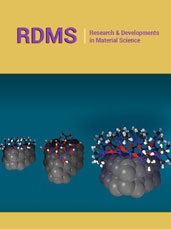
.jpg)





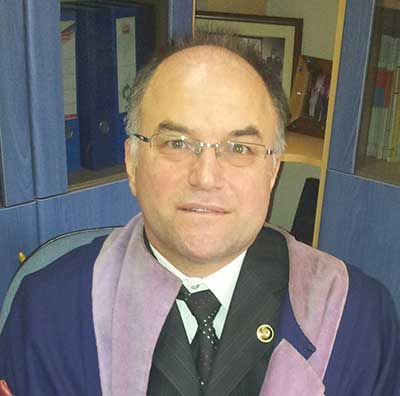
.jpg)














.bmp)
.jpg)
.png)
.jpg)

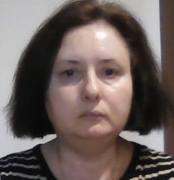







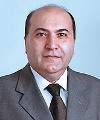
.jpg)






.png)

.png)



.png)
